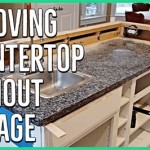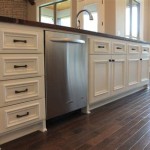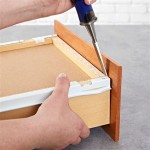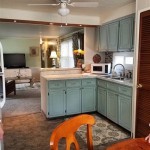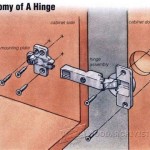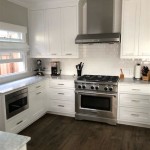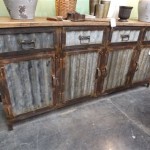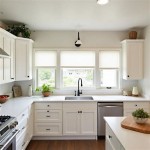Beyond Paint For Kitchen Cabinets: An In-Depth Review
Refurbishing kitchen cabinets can significantly transform a kitchen's aesthetic appeal and overall value. Among the various options available for cabinet refinishing, Beyond Paint has emerged as a popular choice, lauded for its ease of use and perceived durability. This article presents a comprehensive review of Beyond Paint for kitchen cabinets, examining its key features, application process, performance, and potential drawbacks, offering a data-driven perspective for homeowners considering this product for their kitchen renovation projects.
Understanding Beyond Paint's Composition and Key Features
Beyond Paint is an all-in-one bonding paint formulated for application on multiple surfaces, including wood, laminate, and painted cabinets. This eliminates the need for extensive priming or sanding, streamlining the refinishing process. The paint's key selling point lies in its alleged ability to bond directly to existing surfaces, minimizing preparation time and labor. The water-based formula boasts low VOC (Volatile Organic Compounds) content, contributing to a more environmentally friendly and less odorous application experience. Beyond Paint is available in a curated selection of neutral colors, aimed at complementing a wide range of kitchen décor styles. The paint exhibits a matte finish, which is intended to offer a modern and sophisticated look to the cabinets.
Beyond Paint's composition includes advanced polymers and bonding agents designed to create a durable and resilient coating. The manufacturer promotes its product as chip-resistant and easy to clean, making it suitable for high-traffic areas like kitchens. However, the specific details of the paint's chemical formulation are proprietary, preventing a complete comparative analysis with competing cabinet refinishing products. The manufacturer claims that Beyond Paint adheres to a wide array of existing finishes, including varnishes, lacquers, and even oil-based paints, provided the surface is clean and degreased. This adaptability contributes to its appeal for DIY enthusiasts seeking a simplified cabinet transformation solution.
The paint's self-priming attribute is particularly noteworthy. Traditional cabinet refinishing typically involves multiple steps, including thorough sanding, priming, and several coats of paint. Beyond Paint aims to consolidate these steps into a single product application. This feature is especially advantageous for homeowners with limited time or experience in painting, offering a more accessible pathway to cabinet renovation. The integrated bonding agents within the paint formulation are designed to penetrate the existing surface, creating a strong and lasting bond that resists chipping and peeling. However, the effectiveness of this bonding process can vary depending on the specific condition and composition of the existing cabinet finish.
The Application Process: A Step-by-Step Analysis
The success of any paint project, including using Beyond Paint on kitchen cabinets, hinges significantly on proper surface preparation. The manufacturer emphasizes the importance of cleaning the cabinets thoroughly with a degreasing cleaner to remove any grease, grime, or dirt that could impede adhesion. A clean surface is crucial for the paint's bonding agents to effectively interact with the existing finish. Some users report using TSP (Trisodium Phosphate) solutions for this purpose, while others opt for commercially available kitchen degreasers. Regardless of the cleaning agent used, it is essential to rinse the cabinets thoroughly with clean water to remove any residue that could interfere with paint adhesion.
While Beyond Paint is marketed as a no-sanding solution, lightly scuffing the existing cabinet finish with fine-grit sandpaper is often recommended, particularly for slick or glossy surfaces. This process creates a slightly textured surface that enhances the paint's ability to bond effectively. Sanding is not intended to remove the existing finish entirely, but rather to create microscopic abrasions that promote mechanical adhesion. After sanding, it is imperative to remove all sanding dust with a tack cloth or damp rag to prevent it from being incorporated into the paint film.
Applying Beyond Paint typically involves using a brush, roller, or paint sprayer. The manufacturer recommends applying thin, even coats to avoid drips, runs, and uneven coverage. Several thin coats are preferable to a single thick coat, as this allows the paint to dry and cure properly, resulting in a more durable and professional-looking finish. The paint's consistency is relatively thick, which can make it challenging to apply evenly, particularly on intricate cabinet details. Some users find that thinning the paint slightly with water can improve its flow and workability. The recommended drying time between coats is typically several hours, although this may vary depending on the ambient temperature and humidity. Allowing sufficient drying time is crucial for achieving optimal paint adhesion and durability.
After applying the final coat of Beyond Paint, allowing the paint to cure completely is essential. The curing process can take several days or even weeks, depending on the environmental conditions. During this time, it is important to avoid subjecting the cabinets to excessive moisture or abrasion. Some users opt to apply a clear topcoat to enhance the paint's durability and protect it from scratches and stains. However, this is not always necessary, as Beyond Paint is formulated to be relatively durable on its own. The choice of whether or not to apply a topcoat depends on the individual's preferences and the anticipated level of wear and tear the cabinets will be subjected to.
Evaluating Performance and Durability: Real-World Experiences
The performance of Beyond Paint on kitchen cabinets is a subject of ongoing debate among homeowners and DIY enthusiasts. While some users report excellent results, praising the paint's ease of use and durability, others express disappointment with its adhesion, chip resistance, and overall longevity. These conflicting experiences highlight the importance of proper surface preparation, application technique, and environmental factors in determining the success of a Beyond Paint project.
One common complaint among users is the paint's tendency to chip or peel, particularly in high-traffic areas or on cabinets that are frequently exposed to moisture. This can be attributed to inadequate surface preparation, such as failing to thoroughly clean and degrease the cabinets or neglecting to lightly sand slick surfaces. Additionally, applying the paint too thickly or failing to allow sufficient drying time between coats can also contribute to adhesion problems. In some cases, the existing cabinet finish may simply be incompatible with Beyond Paint, regardless of the preparation efforts.
Another issue reported by some users is the paint's susceptibility to staining, particularly from spills or splatters of food or grease. While Beyond Paint is marketed as easy to clean, certain types of stains may be difficult to remove without damaging the paint film. Applying a clear topcoat can help to protect the paint from staining and make it easier to clean. However, the choice of topcoat is crucial, as some products may not be compatible with Beyond Paint and could cause discoloration or other problems.
Conversely, many users report positive experiences with Beyond Paint, praising its ease of application, good coverage, and attractive matte finish. These users typically emphasize the importance of following the manufacturer's instructions carefully and taking the time to properly prepare the cabinets. They also often highlight the cost savings associated with using Beyond Paint compared to hiring a professional cabinet refinisher or replacing the cabinets altogether. Ultimately, the success of a Beyond Paint project depends on a combination of factors, including the user's skill and experience, the condition of the cabinets, and the specific environmental conditions.
The long-term durability of Beyond Paint on kitchen cabinets remains a subject of ongoing evaluation. While some users report that their refinished cabinets have held up well for several years, others have experienced chipping, peeling, or staining within a shorter period. The longevity of the paint finish is likely influenced by factors such as the frequency of use, the type of cleaning products used, and the overall level of care and maintenance provided. Regular cleaning with a mild detergent and avoiding abrasive cleaners can help to prolong the life of the paint finish. Additionally, touching up any chips or scratches promptly can prevent them from spreading and causing further damage.

Beyond Paint Before And After Kitchen Cabinets

Beyond Paint Review Bathroom Vanity Update Without Sanding

Beyond Paint Review

Beyond Paint Review

Reviews For Beyond Paint 1 Gal Soft Gray Furniture Cabinets Countertops And More Multi Surface All In One Interior Exterior Refinishing Pg The Home Depot

Beyond Paint 1 Pt Off White Multi Surface All In One Furniture Cabinets Countertop And More Refinishing Bp39 The Home Depot

Diy Painted Kitchen Cabinets 5 Month Update Beyond Paint All In One

Beyond Paint Review

Beyond Paint 1 Qt Soft Gray Furniture Cabinets Countertops And More Multi Surface All In One Interior Exterior Refinishing Bp11 The Home Depot

Soft Gray
Related Posts

